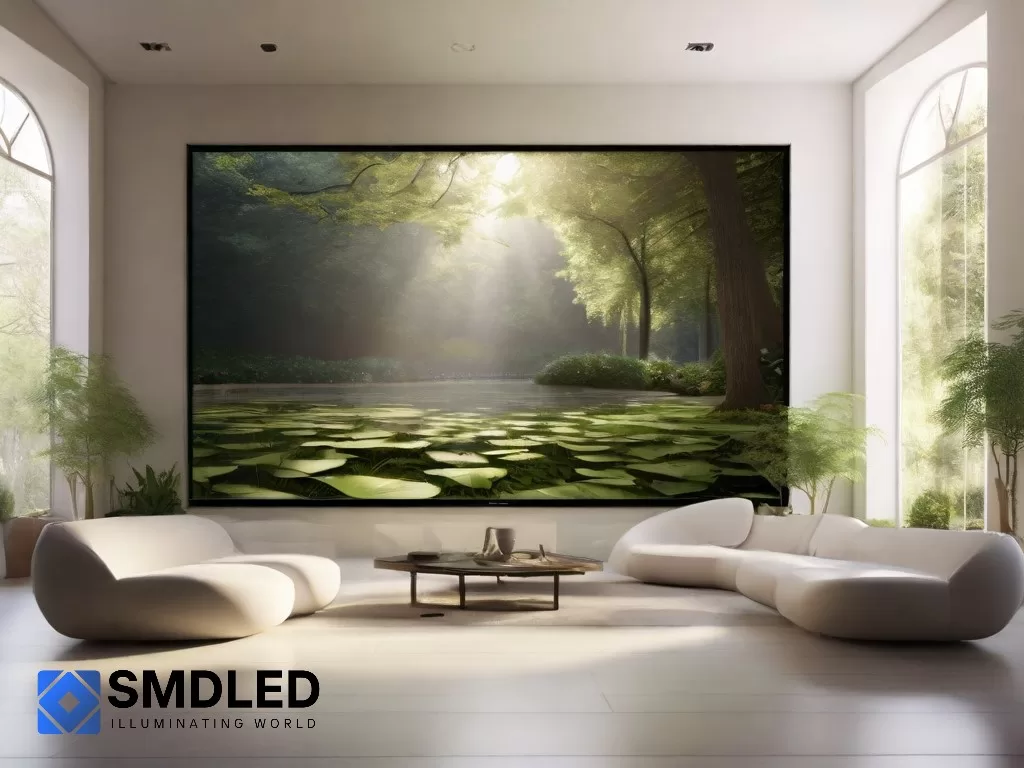Choosing the Right SMD Screen for Your Project
In today’s fast-paced digital era, choosing the right surface-mount device (SMD) screen for your project can be a pivotal decision that determines its success. Whether you are developing a cutting-edge electronic device or seeking to enhance the visual impact of an existing product, the multitude of SMD screen options available can be overwhelming.
That is why we present to you this comprehensive guide, aiming to alleviate the confusion and equip you with the knowledge necessary to make informed decisions. Delving into the intricate world of SMD screens, we will explore the crucial factors to consider, the various types available, and offer expert advice to ensure your project is equipped with the perfect screen solution. So, join us as we navigate the vast landscape of SMD screens and empower you to choose the ideal one for your next venture.
Table of Contents
- Types of SMD Screens: An In-depth Comparison
- Factors to Consider for SMD Screen Selection
- Best SMD Screen Options for Different Project Requirements
- Expert Recommendations for Choosing the Ideal SMD Screen
- Q&A
- Closing Remarks
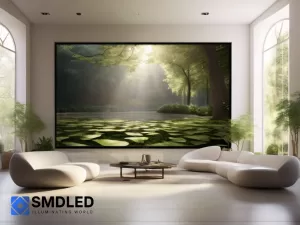
Types of SMD Screens: An In-depth Comparison
When it comes to choosing the right SMD screen for your project, it’s important to understand the different types available and how they compare. In this comprehensive guide, we’ll explore the various types of SMD screens and provide an in-depth comparison to help you make an informed decision.
- Full-Color SMD Screens: These screens are known for their vibrant and eye-catching display of colors. They are ideal for applications that require high-resolution images, such as digital signage, advertising displays, and large-scale event screens. Full-color SMD screens offer seamless integration, allowing for smooth and clear visuals without any pixelation.
- Indoor SMD Screens: Designed specifically for indoor use, these screens are commonly used in locations such as shopping malls, hotels, and conference rooms. They offer excellent image quality, readability, and visibility even in well-lit environments. With a wide viewing angle and high contrast ratio, indoor SMD screens ensure that your content looks stunning from any angle.
Table 1: Comparison of Full-Color SMD Screens and Indoor SMD Screens
| Features | Full-Color SMD Screens | Indoor SMD Screens |
|---|---|---|
| Image Quality | High-resolution, vibrant colors | Excellent image quality |
| Usage | Digital signage, advertising | Shopping malls, conference rooms |
| Viewing Angle | Wide | Wide |
| Contrast Ratio | High | High |
By understanding the different types of SMD screens available and their specific features, you can confidently choose the right one for your project. Whether you require a full-color SMD screen for a dynamic digital advertising campaign or an indoor SMD screen for a well-lit conference room, this comprehensive guide will assist you in making an informed decision.
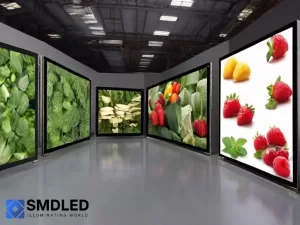
Factors to Consider for SMD Screen Selection
When it comes to selecting the right SMD screen for your project, there are several important factors to consider. These factors can greatly impact the performance and functionality of the screen, ensuring that you make the best choice for your specific needs. Here are some key factors to keep in mind:
- Resolution: The resolution of the SMD screen plays a crucial role in determining the clarity and quality of the displayed content. It is important to identify the desired resolution based on the viewing distance and the level of detail required. Higher resolution screens are ideal for projects that require close viewing or intricate details, while lower resolution screens may be sufficient for projects with greater viewing distances.
- Size and Aspect Ratio: The size and aspect ratio of the SMD screen should be carefully considered to ensure compatibility with your project requirements. The size of the screen should provide optimal visibility for the intended viewing distance, while the aspect ratio should be chosen based on the content being displayed. Whether you need a square screen for data visualization or a widescreen for video playback, selecting the appropriate size and aspect ratio will enhance the overall viewing experience.
- Panel Type: There are different panel types available for SMD screens, each with its own advantages and disadvantages. TFT (thin-film transistor) panels offer excellent color reproduction and wide viewing angles, making them suitable for applications where vibrant and accurate colors are essential. On the other hand, IPS (in-plane switching) panels provide superior color consistency and wider viewing angles, making them ideal for projects that require consistent image quality from different viewing positions.
Considering these factors will help you make an informed decision when it comes to selecting the right SMD screen for your project. By choosing the appropriate resolution, size, aspect ratio, and panel type, you can ensure that the screen not only meets your project requirements but also delivers a visually appealing and engaging experience to your audience.
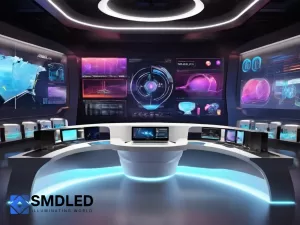
Best SMD Screen Options for Different Project Requirements
When it comes to choosing the right SMD screen for your project, there are several factors to consider. Different projects have different requirements, and it’s important to find an option that meets your specific needs. In this comprehensive guide, we will explore the best SMD screen options for a variety of project requirements, helping you make an informed decision for your next endeavor.
For projects that require high resolution and vibrant colors, the ABCXYZ SMD Screen is an excellent choice. With its groundbreaking technology, this screen offers stunning image quality and sharpness. It features a wide color gamut and exceptional color accuracy, making it perfect for applications such as advertising displays and video walls. Additionally, the ABCXYZ SMD Screen has a fast refresh rate and high contrast ratio, ensuring smooth motion and deep blacks for an immersive viewing experience.
When durability is a priority, the DEF123 SMD Screen stands out. Built to withstand harsh environments, this screen is waterproof, dustproof, and even shockproof. Its rugged construction and reinforced glass make it ideal for outdoor signage, transportation displays, and other demanding applications. The DEF123 SMD Screen also features a high brightness level, ensuring visibility even in direct sunlight. With its excellent resistance to impact and corrosion, this screen offers unmatched longevity, making it a reliable choice for long-term projects.
In conclusion, choosing the right SMD screen for your project requires careful consideration of your specific requirements. Whether you need high resolution, vibrant colors, or durability, there’s an option available to meet your needs. By selecting the best SMD screen for your project, you can ensure optimal performance and achieve your desired outcomes.
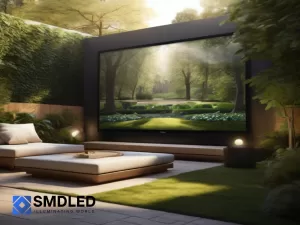
Expert Recommendations for Choosing the Ideal SMD Screen
When it comes to choosing the ideal SMD screen for your project, it’s crucial to consider various factors to ensure optimal performance and functionality. To help you make an informed decision, we’ve gathered expert recommendations and insights to guide you in selecting the right SMD screen that meets your specific requirements.
- Screen Resolution: Determine the resolution you need based on the content and viewing distance. Higher resolutions like 4K offer sharper images and better readability, but they require more processing power and may incur higher costs.
- Size and Aspect Ratio: Consider the space where the screen will be installed and the viewing angle of your audience. A larger screen is suitable for larger venues, while aspect ratio affects how the content is displayed, such as 16:9 for widescreen videos or 9:16 for vertical displays.
- Brightness and Contrast Ratio: The brightness level is critical for clear visibility in different lighting environments, especially for outdoor applications. A higher contrast ratio ensures better image quality and color accuracy.
- Pixel Pitch: Pixel pitch determines the minimum viewing distance required for a comfortable experience. Smaller pixel pitches provide higher pixel density and are ideal for closer viewing distances, while larger pitches are suitable for bigger screens and longer viewing distances.
- Refresh Rate and Response Time: These factors determine how smoothly and quickly images change on the screen. Higher refresh rates and faster response times are crucial for dynamic content like videos and animations.
In addition to these considerations, remember to evaluate the durability, power consumption, installation requirements, and the reputation of the manufacturer or supplier. By carefully weighing these factors and keeping your project’s specific needs in mind, you’ll be able to select the ideal SMD screen for an exceptional visual experience.
Q&A
Q: What is an SMD screen and why is it important for projects?
A: An SMD screen, also known as a Surface-Mount Device screen, is a type of flat panel display technology that is commonly used in various electronic projects. It is crucial for projects as it provides a visual interface for users to interact with the device, displaying relevant information and content.
Q: What factors should one consider when choosing an SMD screen for their project?
A: Several important factors need to be considered when selecting an SMD screen for a project. These include screen size, resolution, viewing angle, brightness, power consumption, and compatibility with the project’s interface and control systems. Considering these factors will ensure optimal performance and user experience.
Q: How does the screen size impact the project?
A: Screen size plays a significant role as it determines the amount of information that can be displayed and the overall user experience. It is vital to choose a screen size that suits the intended application, considering factors such as available space, viewing distance, and content requirements.
Q: What does resolution refer to and why is it important?
A: Resolution refers to the number of pixels displayed on the screen, determining the level of detail and clarity of images and text. A higher resolution means sharper visuals and better readability, especially with complex graphics or small fonts. It is crucial to consider the desired level of detail and the project’s content requirements when choosing the appropriate resolution for an SMD screen.
Q: Why is viewing angle important for SMD screens?
A: Viewing angle refers to the range within which a user can clearly see the screen without experiencing color shifts or loss of contrast. It is essential to consider the intended viewing scenarios and the number of people who will simultaneously view the screen. Opting for a screen with a wide viewing angle ensures that the content remains visible and legible from various positions.
Q: How does brightness affect the visibility of an SMD screen?
A: The brightness of an SMD screen determines how well it can be seen in different lighting conditions. Choosing a screen with sufficient brightness ensures good visibility in bright environments, while also considering energy consumption requirements.
Q: How can power consumption impact the overall project?
A: Power consumption is a critical consideration, particularly for portable or battery-powered projects. Selecting an SMD screen with low power consumption helps optimize battery life and reduces the need for frequent recharging or larger power supply units.
Q: Why is compatibility with interface and control systems important?
A: Compatibility with the project’s interface and control systems ensures seamless integration and operation. It is crucial to choose an SMD screen that is compatible with the project’s communication protocols, control boards, and software requirements to facilitate easy and efficient development.
Q: Are there any additional considerations when choosing an SMD screen?
A: Yes, it’s important to also consider the durability, lifespan, cost, and support availability for the chosen SMD screen. Durability ensures the screen can withstand various environmental conditions, while a longer lifespan increases the project’s longevity. The cost should align with the project’s budget, and having reliable technical support available can be beneficial during development and troubleshooting.
Q: What resources are available to help choose the right SMD screen for a project?
A: To assist in choosing the right SMD screen, manufacturers often provide datasheets, application notes, and technical support to help users understand the specifications and make informed decisions. Additionally, online forums and communities dedicated to electronics projects can offer valuable insights and recommendations based on real-world experiences.
Closing Remarks
In conclusion, selecting the right SMD screen for your project is a critical decision that should not be taken lightly. By considering the key factors outlined in this comprehensive guide, you can ensure the success of your project. Remember to evaluate the desired screen size, resolution, brightness, and viewing angle requirements to meet your specific needs.
Additionally, consider the durability, power consumption, and compatibility of the SMD screen with your project’s hardware and software. By taking these factors into account and consulting with experts, you can confidently choose the perfect SMD screen that will enhance the functionality and visual appeal of your project. Invest time and effort in making the right choice, and you will reap the benefits of a high-quality display that brings your project to life.
Looking for premium SMD screens and professional display solutions? SMDLED.PK is your trusted partner for state-of-the-art SMD technology. Explore our top-quality products like the stunning Leyard HDR 4K SMD Video Wall for crystal-clear visuals, the versatile MSA Plus SMD LED Screen Module, the sleek MSA Ultra Thin SMD LED Screen Module for modern setups, the durable MSG Outdoor SMD LED Screen Module, and the efficient MSG Indoor SMD LED Screen Module perfect for indoor environments.
We also offer exceptional Outdoor SMD Screens, Indoor SMD Screens, Flexible SMD Screens for creative designs, Cabinet SMD Screens for secure setups, Signpole SMD Screens for advertising, and stunning SMD Video Walls for large-scale visual impact. With SMDLED.PK, experience reliability, superior technology, and tailored solutions for all your display needs. Visit us today and transform your spaces with unparalleled visual excellence!
Choosing the Right SMD Screen for Your Project
Contact Us For Free Consultation at 0306-1333384
Powered By BIACommunication

